Temples in Japan are a thing of beauty in and of themselves, but many temples also boast beautiful gardens and greenery to add to their allure. The Saiho-ji Temple in Kyoto has been standing for centuries with repairs being done over the years and is home to a famous moss garden.
Japan is home to an abundance of temples symbolic of the Buddhist and Shinto faiths. It is truly a spiritual experience for anyone to visit these temples regardless of faith.
The Origins Of The Saiho-ji Temple
As with most temples, the Saiho-ji Temple was erected as a place to honor a buddha. This one honors Amitabha, one of the celestial buddhas.
The area was built in the Nara period, between 710 and 794 AD. Before the area became a temple, it was believed to be a villa belonging to Prince Shotoku.
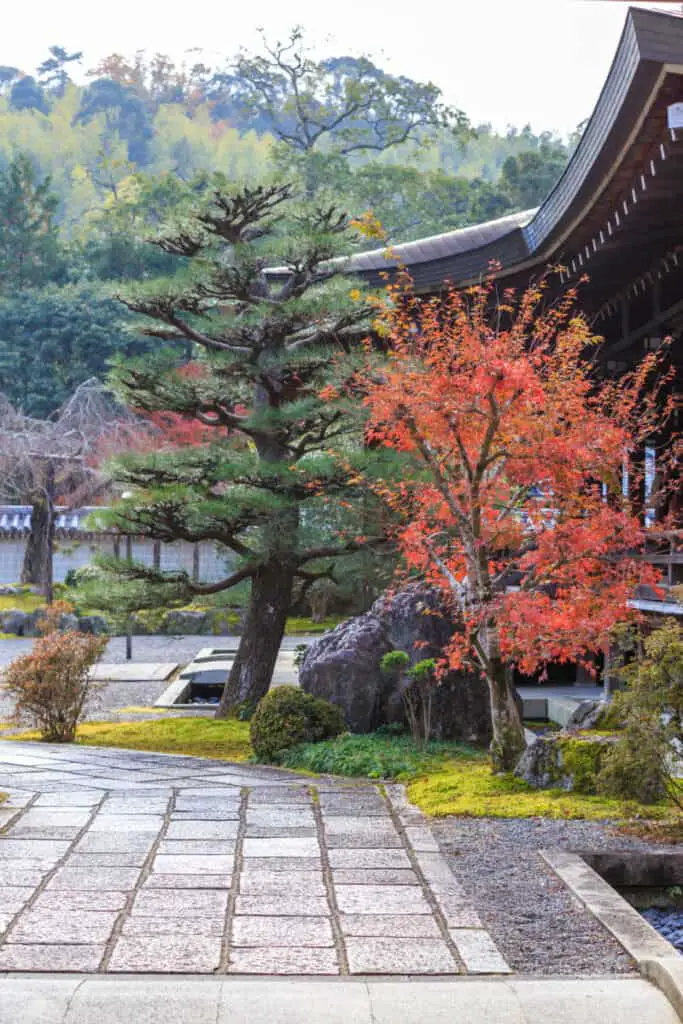
The temple was originally built by Gyoki, who was a Japanese Buddhist priest at the time. As the temple aged, so did its structure.
In the 1300s, a Japanese gardener and respected Zen priest known as Muso Soseki was asked to help restore it. He did so and named it Saiho-ji to honor its reflection of Zen Buddhism.
This temple has since served as inspiration for the design of other temples throughout Japan, including the esteemed Golden Pavilion.
While the purpose of the temple has changed over centuries, it has preserved a lot of historical significance along the way.
The Moss Garden’s Origins
The beautiful moss gardens in the temple’s eastern grounds were put into place during the Meiji period of Japan. The garden expands around the Golden Pond, which is shaped to emulate the Chinese letter for the heart.
There are also three little islands within the Golden Pond, called Yuhi Island, Asahi Island, and Kiri Island.
Within the moss garden is said to live over 100 different varieties of moss, making it a unique garden to admire. The temple area flooded during the Edo period, which is believed to have caused many of the moss varietals to sprout.
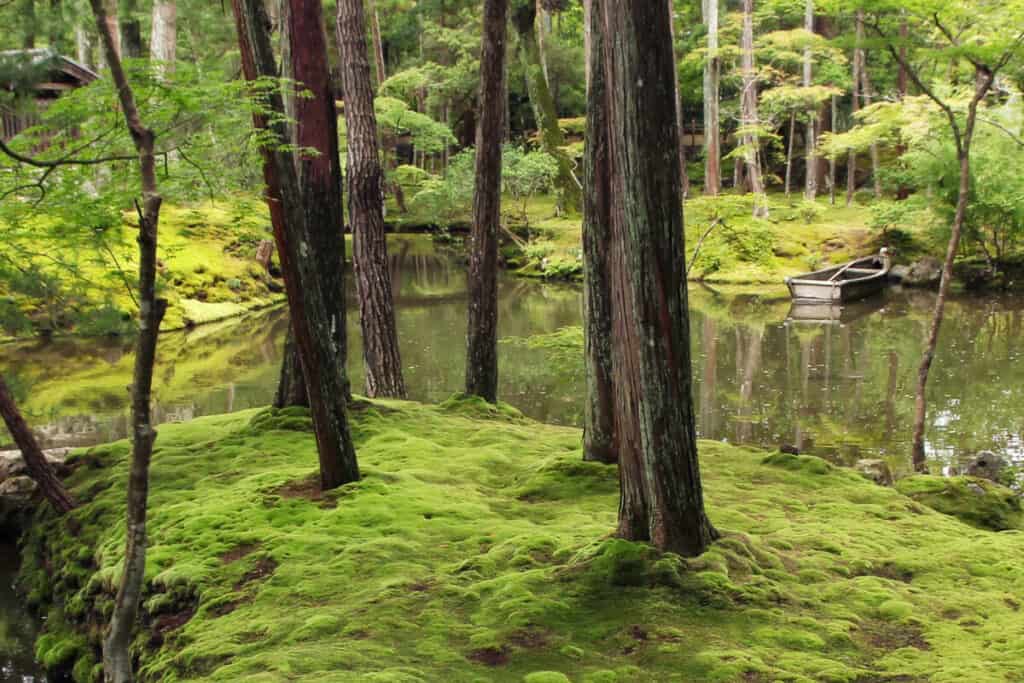
Exploring The Moss Gardens
The moss garden contains two levels, and there are designated areas throughout the garden to explore. The top area is the karesansui style garden, and it is not open for the public to walk through.
The lower level is where you will find the Golden Pond, also known as Ogon-chi. This is pretty much considered the centerpiece of the entire garden, though the whole area is unique and beautiful.
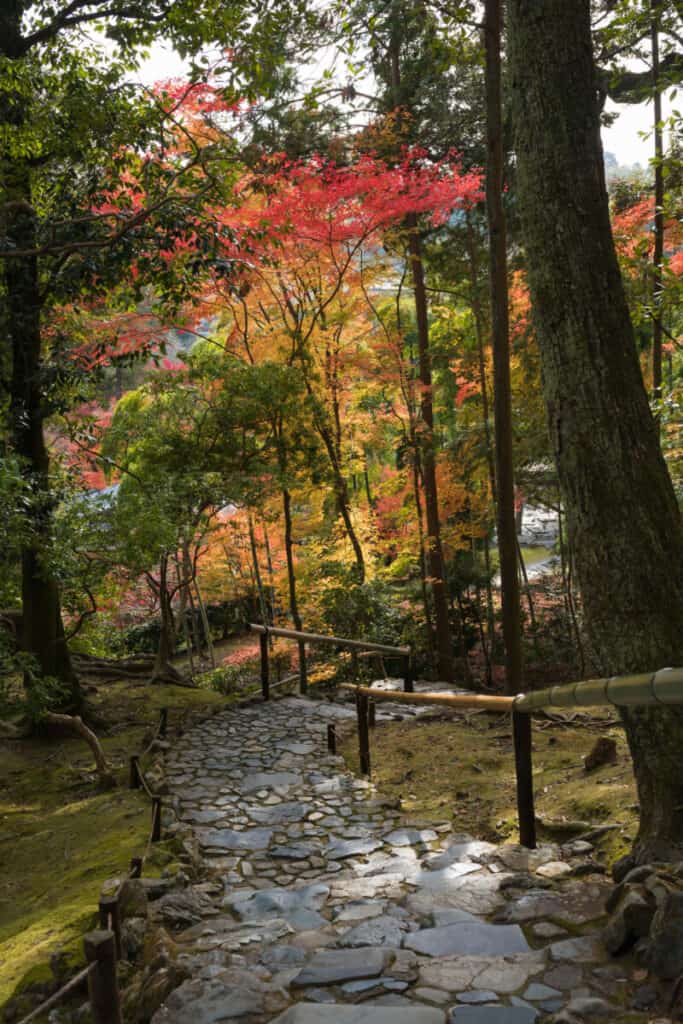
There is a walking path that travels throughout much of the moss garden, but it is not allowed to be walked on by tourists. It is usually roped off in order to avoid people trampling over the moss.
It’s interesting to note how the multiple species of moss that decorate the garden and temple is one of the main reasons people choose to visit, even though the moss has only been in the area for a couple of hundred years.
It’s also even more interesting to remember that the moss may have been the result of a natural disaster.
Karesansui
A karesansui is a distinctive type of garden that features stones and rocks arranged to depict landscapes. The karesansui on the top area of the Saiho-ji Temple area is the oldest in Japan.
Muso Kokushi had actually originally designed this karesansui in 1339 but had wanted this site to be his grave.
He was known for his use of rocks and stones to decorate gardens as opposed to ponds, which were most often used back then.
This area is not open for public viewing as it is used as a space for Zen spirit training.
The Tea Houses
Within the temple grounds, there are three tea houses; Shonan-tei, Shoan-do, and Tanhoku-tei.
Shonan-tei was the first tea house in the temple area, and it was once destroyed but then restored by Sen Shoan, a tea ceremony master.
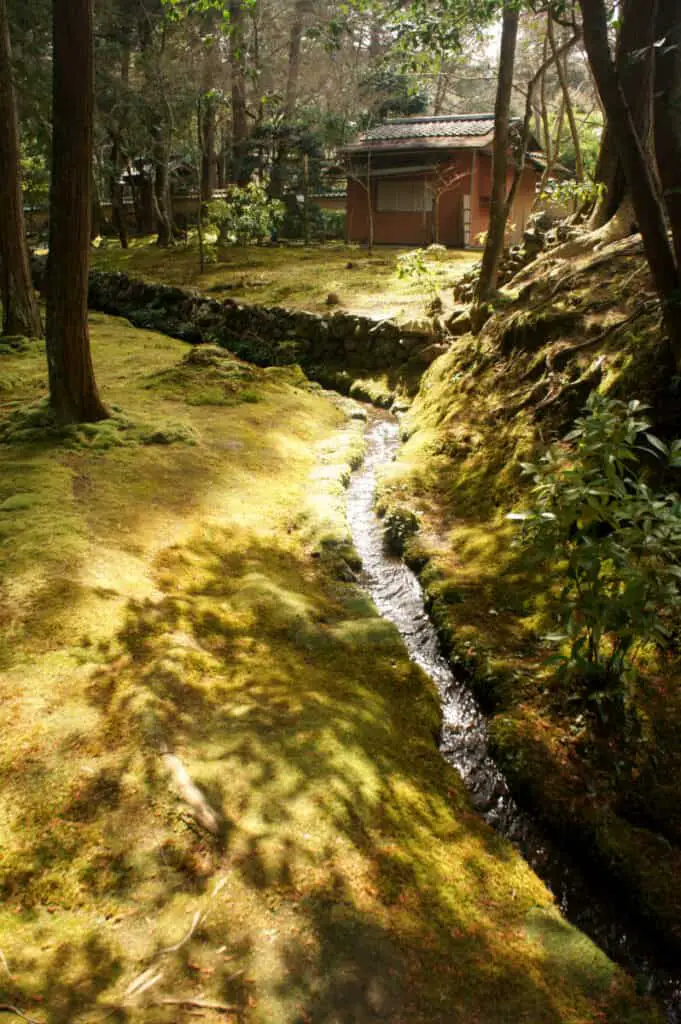
This tea house is known for offering a fantastic view of the moon at night. It also used to be used as a hideout by many prominent Japanese figures. Shonan-tei is considered an Important Cultural Property to Japan.
Shoan-do was built in the early 1900s, and actually has a statue of Sen Shoan, and Tanhoku-tei was given to the temple shortly after by a potter named Zoroku Mashimizu.
The Main Temple Hall
The main temple hall is usually opened year-round, as the garden is not available for tourists to stroll around in the certain parts of winter.
This is because the garden is usually maintained during this time, and is also given time to rest and regain some of its health.
Winter Activities
If you find yourself in Kyoto in the winter months, it is still worth making the Saiho-ji Temple one of your destinations to visit.
While you can’t visit the moss garden, you have an unparalleled opportunity to embrace some sacred Zen Buddhist activities.
Furthermore, you’ll be able to view some of the esteemed artwork and sliding screens housed in the Main Hall, or the Sairaido.
Much of the artwork was created by Domoto Insho, a well-known Japanese artist. His art is not always available to be viewed by tourists, so if you get the opportunity to see it, you’re very fortunate.
The Modern Day Saiho-ji Temple
Today, the Saiho-ji Temple is often referred to as Kokedera, which translates to moss temple, so the name is very fitting. The more formal name given to the temple is Koinzan Saiho-ji.
The temple is now considered to be a protected piece of land and history under Kyoto’s Unesco World Heritage Site designation.
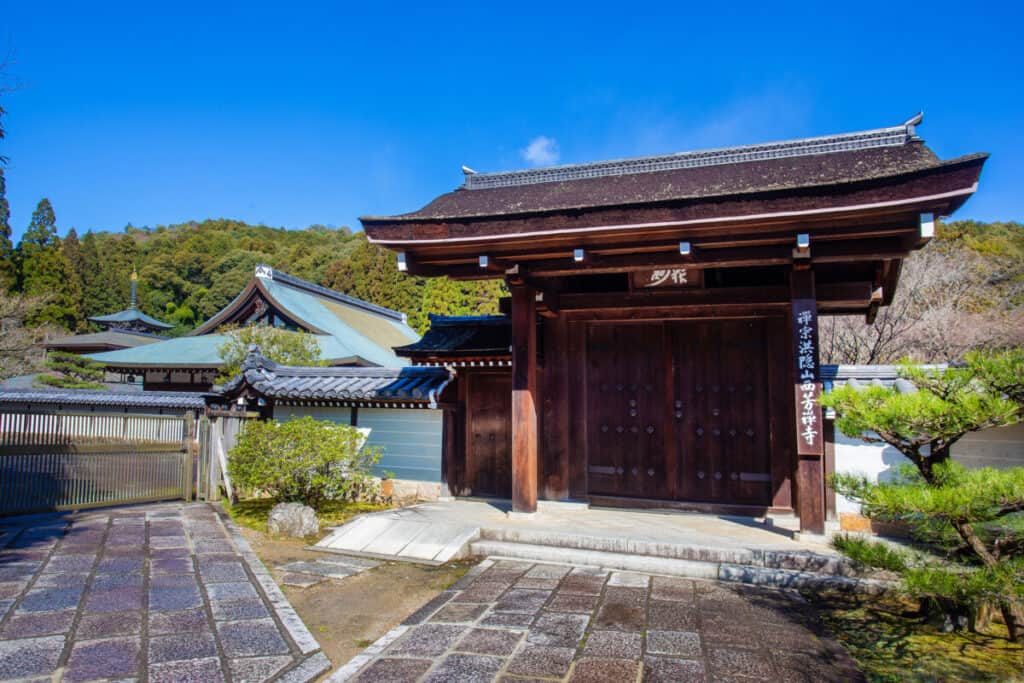
This designation honors the significance that Saiho-ji Temple holds for Japan and for the rest of the world.
This also means there will be efforts put in place to keep the temple and its grounds preserved as well as possible.
Visiting Saiho-ji Temple
While visitors of the Saiho-ji Temple used to have free reign of the area, there is now a limit for how many patrons can visit at one time.
This is to protect the integrity of the moss garden and avoid allowing people to walk all over it and destroy it.
There is a process that you must complete if you want to visit the Saiho-ji Temple, so if this destination is on your wish list, you should plan to request a reservation a couple of months in advance.
You will have to send a postcard or letter with specific information, which can be found on the Saiho-ji Temple website, and mail it to them.
Saiho-ji Temple Official Website
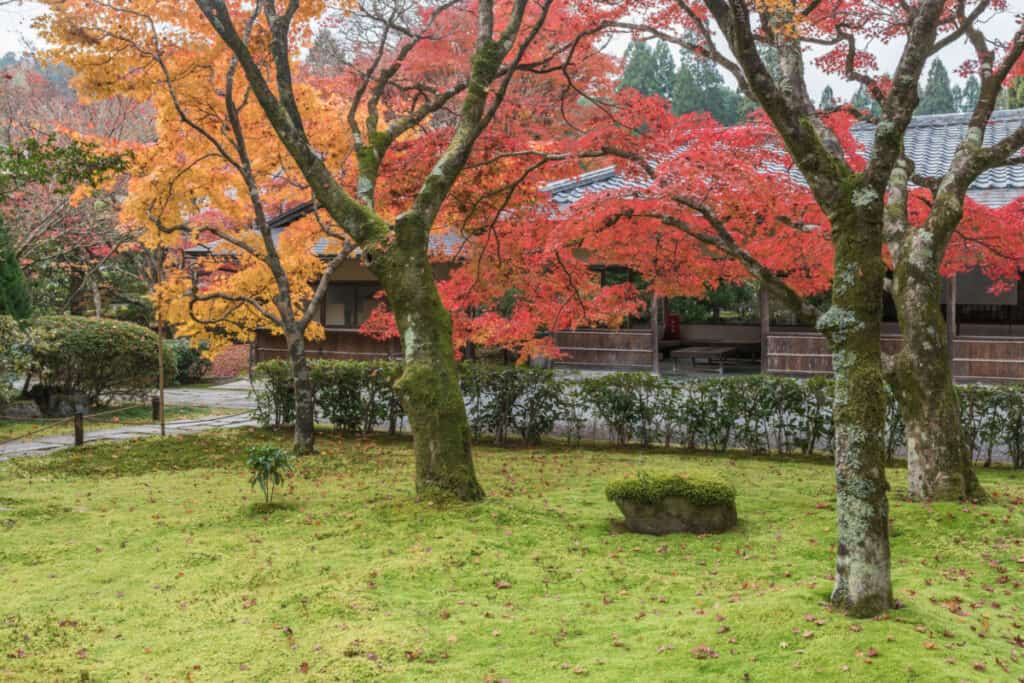
You will be mailed a return postcard that gives you all of the details as to when your visit has been permitted.
You must bring this postcard with you in order to show that your reservation is valid.
You will be advised of a time when you can visit, and your visit will be restrained to between 90 minutes to a couple of hours.
You will be let in with a small group, but the group will be able to spread out easily with how large the temple grounds are.
Admission
It does cost money to visit the temple, but it is worth it to see such a magnificent temple that has existed for centuries.
On the days they are open, they are usually open at 10 a.m. They do not allow you to choose a time to visit, as their hours sometimes change.
Saiho-ji Temple Location Via Google Maps
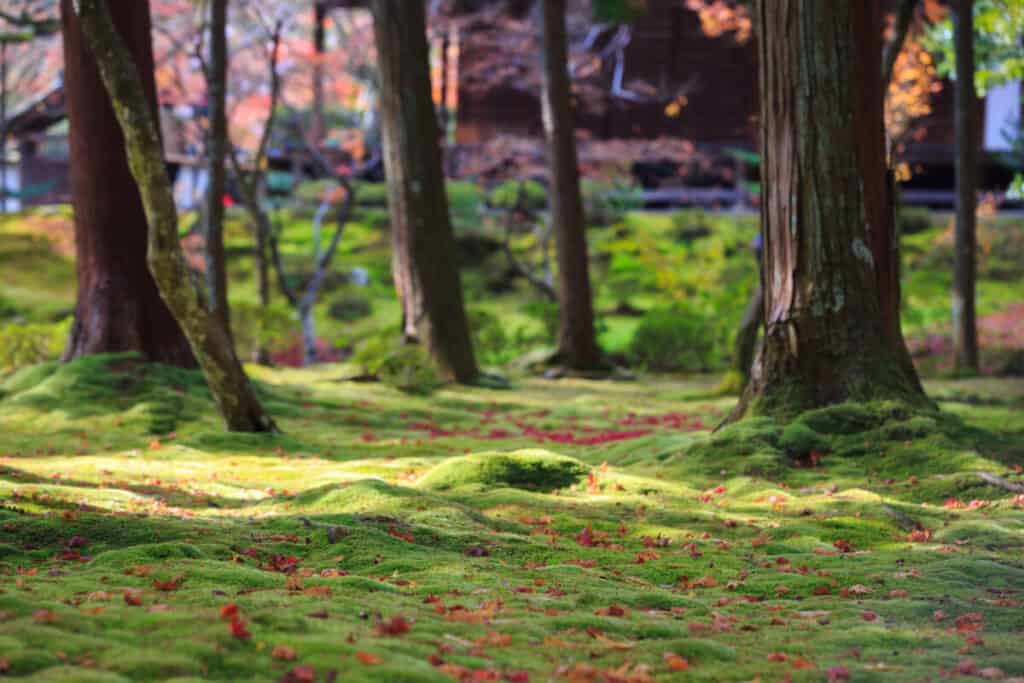
The cost is 3000 yen per person and must be paid in cash upon arrival. This equates to about $26 and changes in US dollars. This would be considered expensive compared to what it costs to visit some other temples.
That being said, given that the temple only allows visitors by reservation, there won’t be a large crowd to maneuver through. This allows you to really immerse yourself in the tranquility and peace the temple offers.
Religious Activities
When visiting the Saiho-ji Temple, there is a possibility that you may be invited to participate in some traditional Buddhist religious practices.
One of these practices includes helping to preserve ancient text by hand-copying existing scriptures, known as sutras. You might also be asked to participate in the chanting of these sutras.
There is also the possibility you will be able to participate in zazen, which is also known as sitting meditation.
Finally, you might have the opportunity to record a wish down with your name and address, and the monks will pray for that wish.










